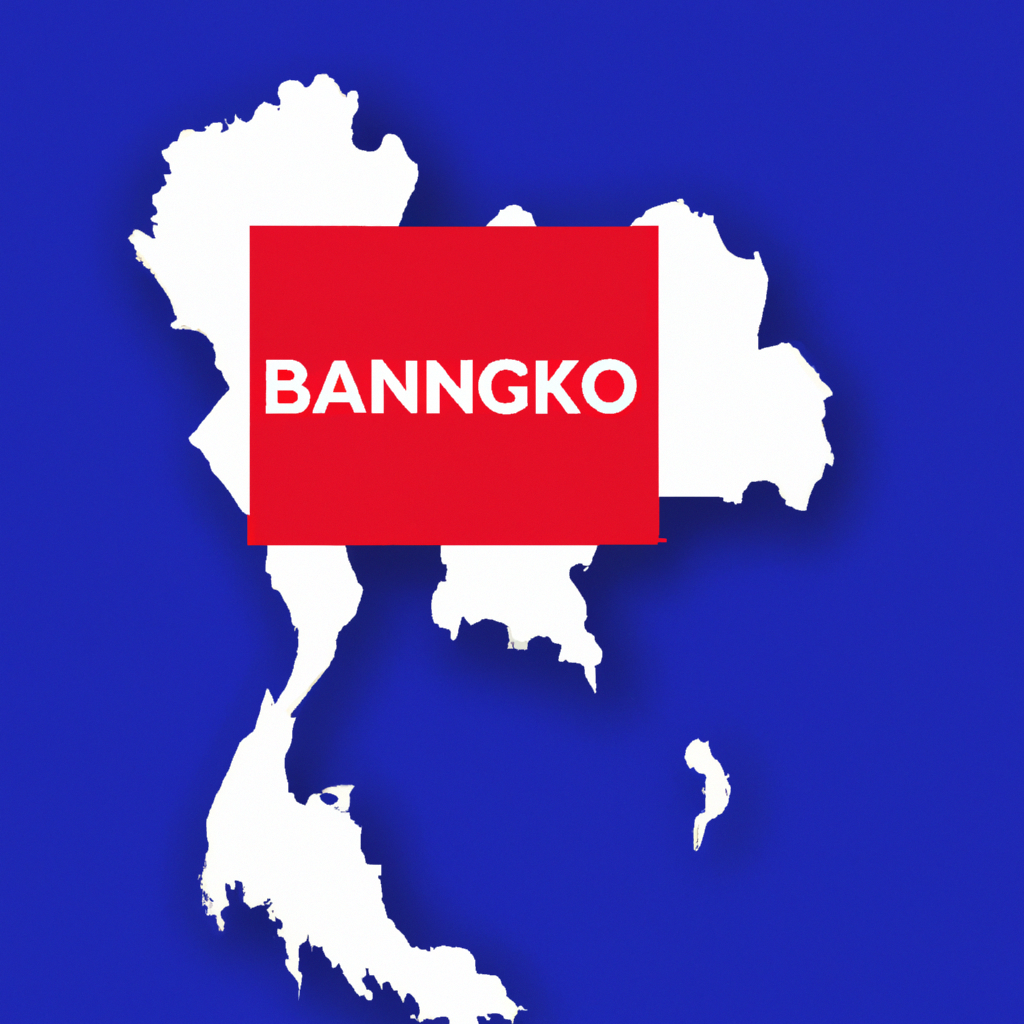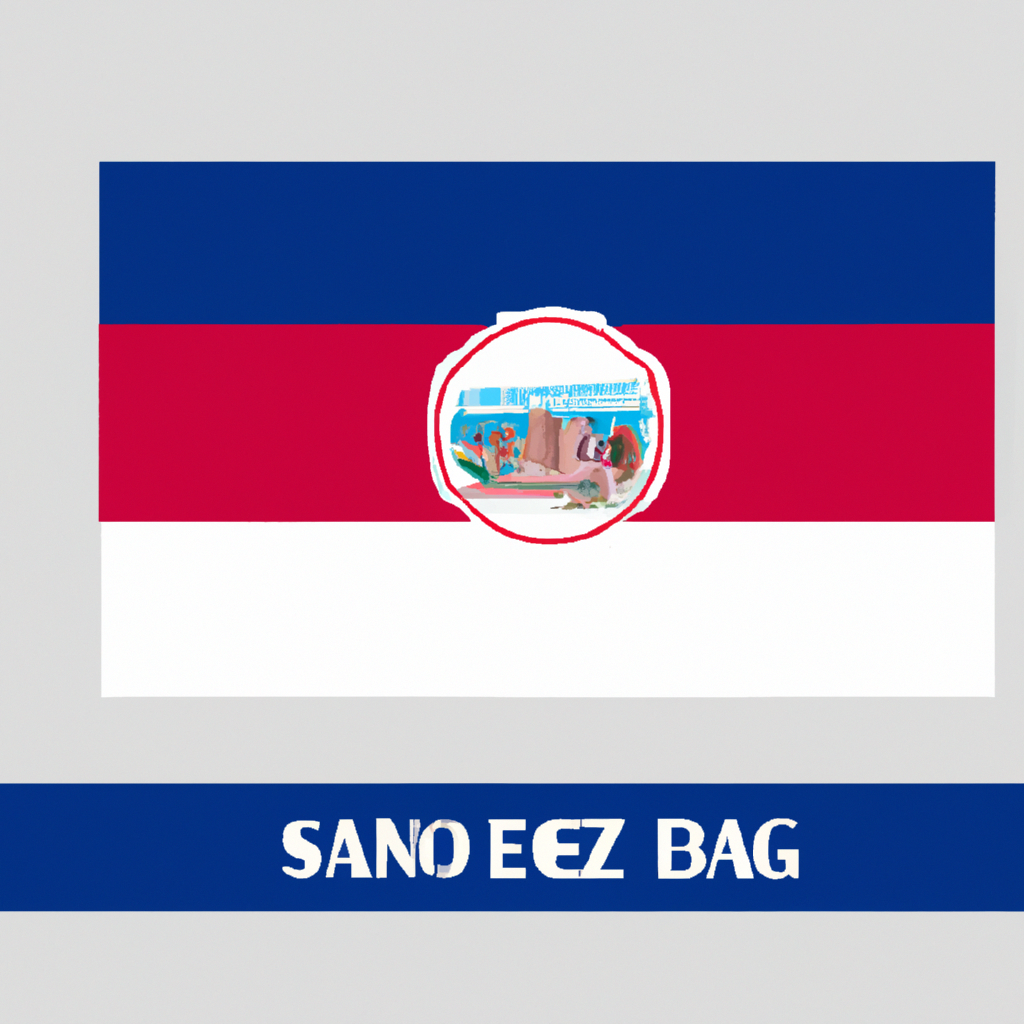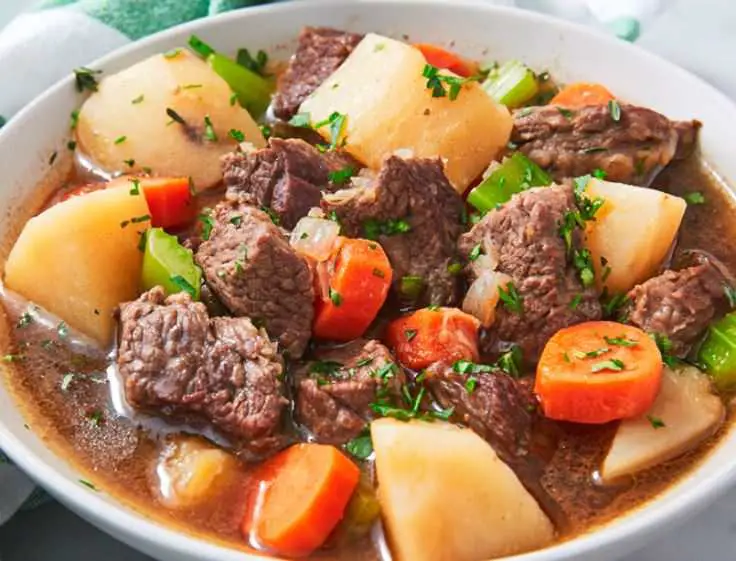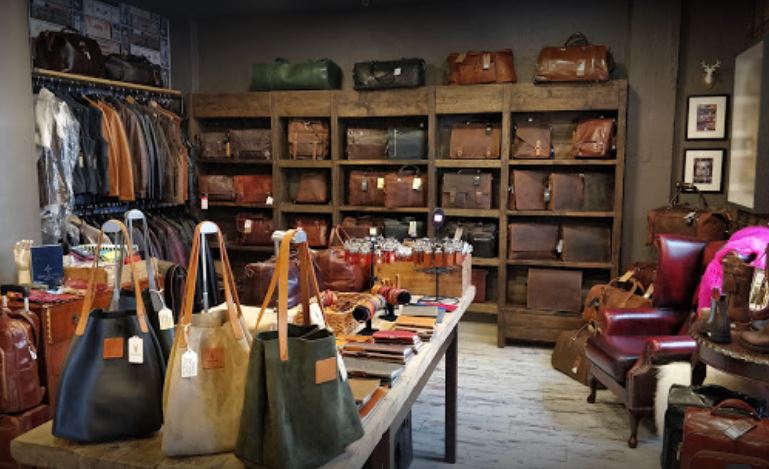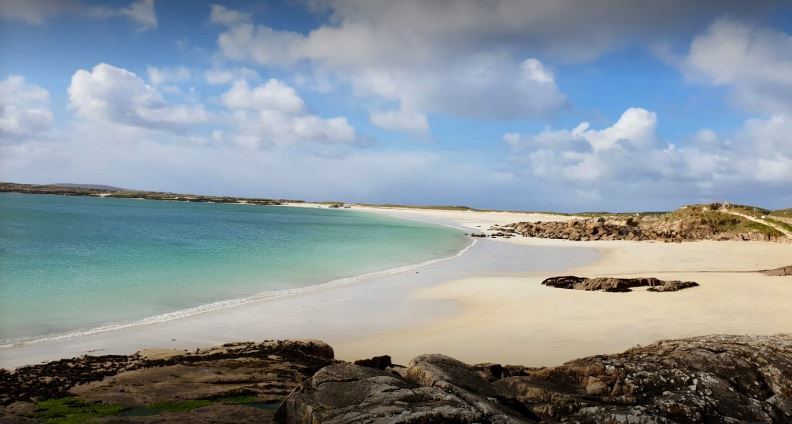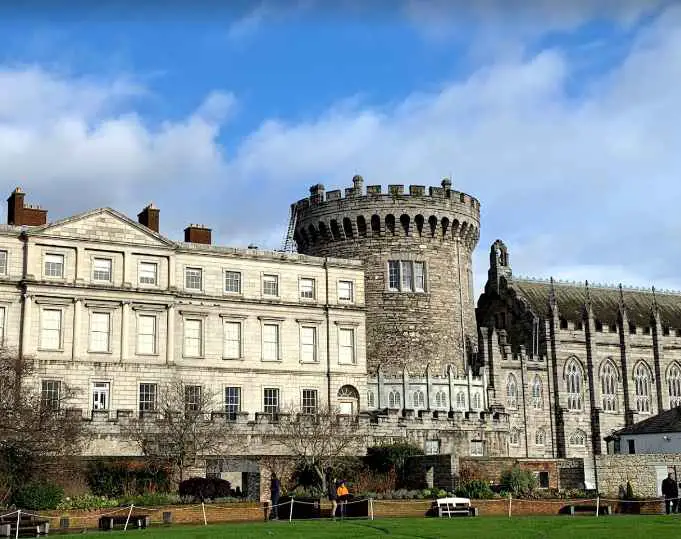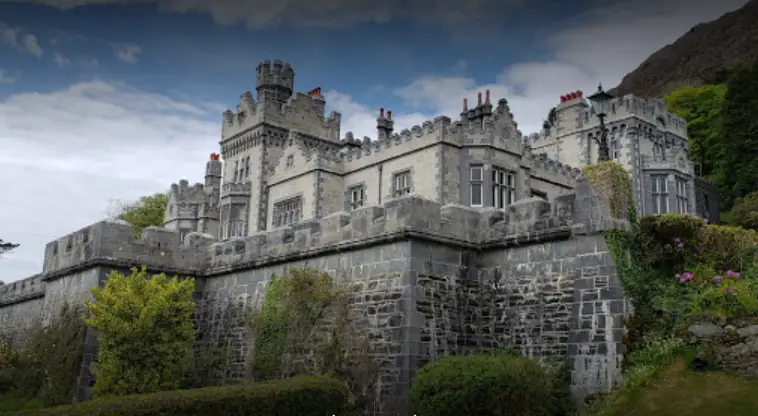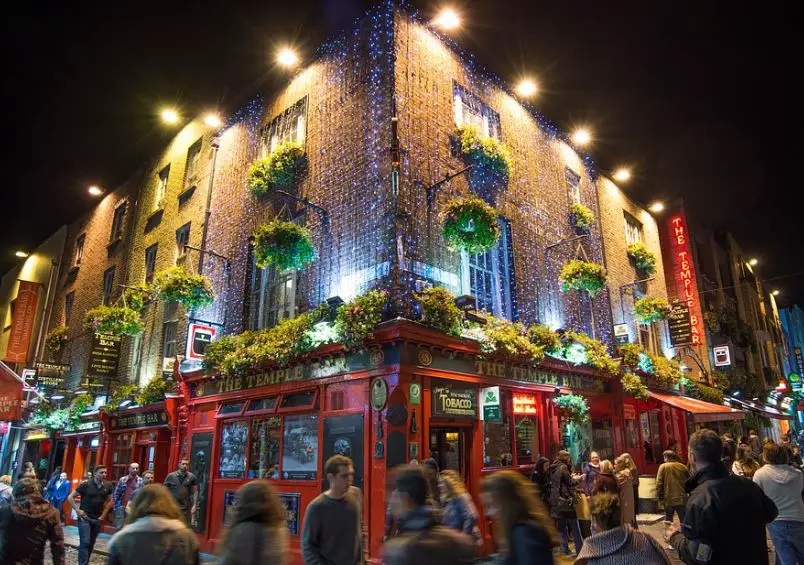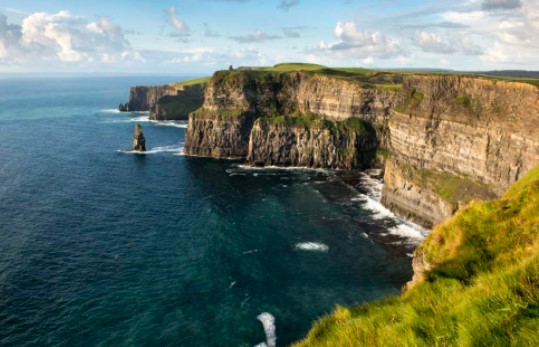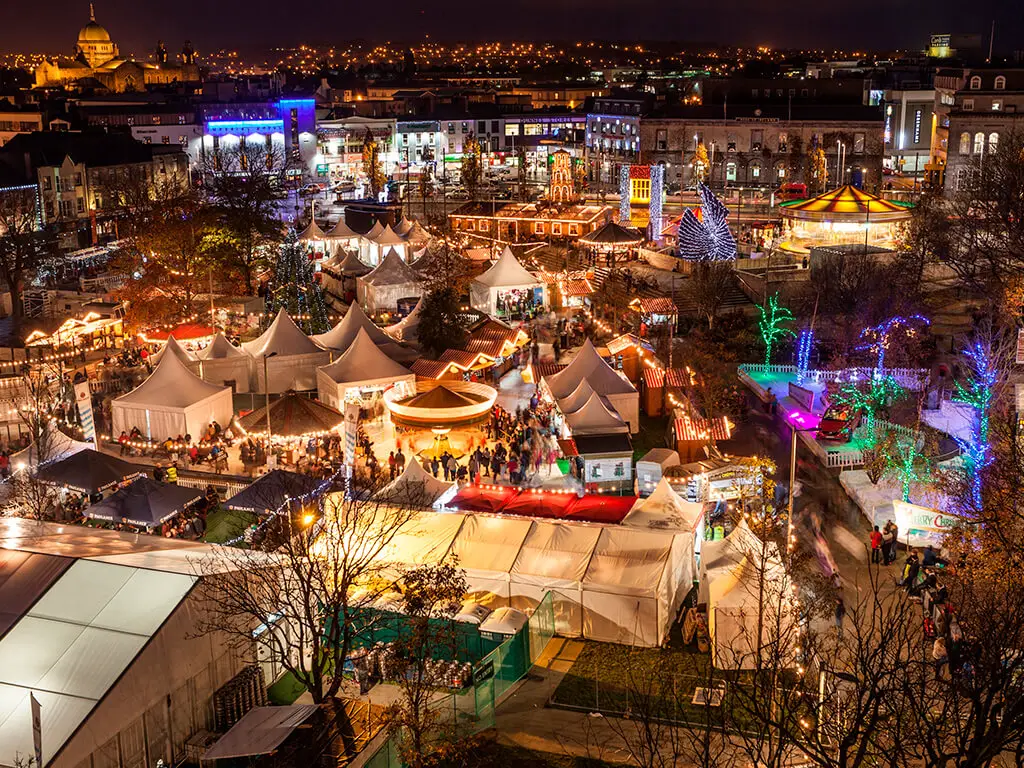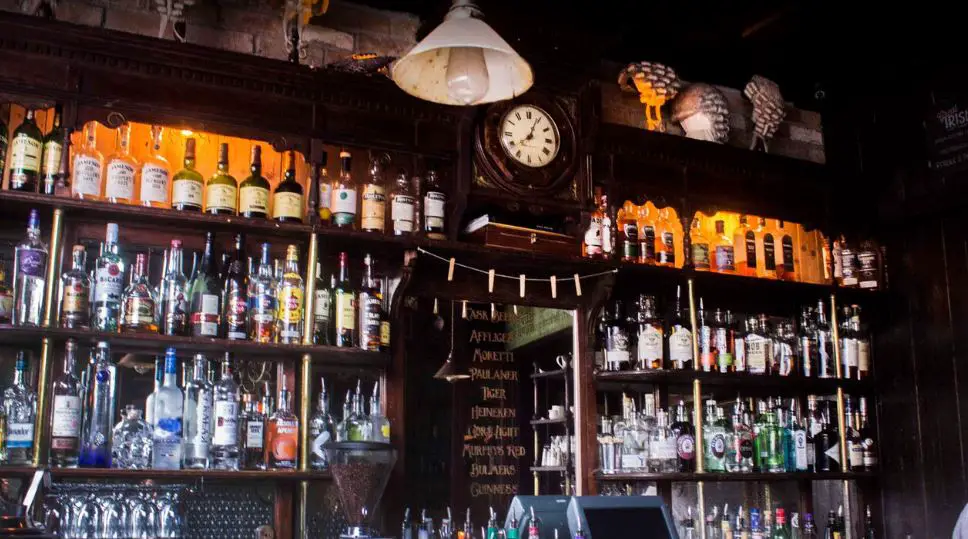Dublin, Ireland: Interesting Facts,History, Things to do,Why to Visit
Post ByAdequate Travel
Dublin, Ireland is a delightful destination, bursting with interesting history and unique cultural attractions. From its famous beer and pubs to its nearby rugged landscape, Dublin has something for everyone. With a surprisingly mild climate, the city offers many fun things to do, like taking a stroll through the picturesque gardens of St. Stephen's Green or admiring the impressive architecture of Trinity College. With a range of activities to choose from, from sightseeing tours to café hopping, Dublin offers plenty of ways to spend a memorable vacation. Not to mention, Dublin is also home to some incredible dishes and delicious craft beers. Whether you’re looking for a relaxing vacation or you’re a die-hard history buff, Dublin will definitely exceed your expectations.
Ireland, officially known as the Republic of Ireland, is a small island nation located in Western Europe. It shares a border with Northern Ireland, which is part of the United Kingdom. The country has a rich history, with evidence of human habitation dating back thousands of years. Ireland gained independence from Britain in 1922 and became a fully sovereign state in 1937. It is a parliamentary democracy with a president as the head of state and a prime minister as the head of government. The economy of Ireland has seen significant growth in recent decades, with sectors such as technology and pharmaceuticals playing a significant role. The country is known for its stunning natural landscapes, vibrant music and literary traditions, and warm hospitality. Ireland is also famous for its cultural heritage, including ancient Celtic traditions, Gaelic language, folklore, and traditional music. Tourism is a major industry, attracting millions of visitors each year who come to explore its historic sites, castles, and scenic landscapes, including the famous Cliffs of Moher and the Ring of Kerry.ireland tourist attractions offer a diverse range of experiences for every traveler.
Interesting facts
Historical Significance
Ireland has a rich history and is known for its historical sites and events. One interesting fact is that it has the oldest pub in Europe, Sean's Bar, which dates back to 900 AD. This pub has been in continuous operation for over a thousand years and is a popular tourist attraction.
Landscape and Natural Beauty
Ireland boasts stunning landscapes and natural beauty. The Cliffs of Moher is one of the most iconic landmarks in Ireland and is visited by millions of tourists each year. These cliffs rise 214 meters above the Atlantic Ocean and offer breathtaking views. Additionally, Ireland is home to numerous national parks, such as Killarney National Park, which is known for its picturesque lakes and scenic walking trails.
Mythology and Folklore
Ireland is steeped in mythology and folklore, which adds to its cultural richness. The legend of the leprechaun is one example of Irish folklore that has become globally recognized. Leprechauns are believed to be mischievous little men who store their gold at the end of a rainbow.
Literary Heritage
Ireland has a strong literary heritage, with many famous authors and poets hailing from the country. Dublin, the capital city, is known for its association with renowned Irish writer James Joyce. The city has several landmarks dedicated to Joyce, including the James Joyce Centre and the famous Martello Tower, featured in his novel Ulysses.
Cultural Traditions
Ireland has a vibrant cultural scene with unique traditions. Irish step dancing is a traditional dance form characterized by rapid footwork and precise movements. It gained international fame through shows like Riverdance and is a cherished part of Irish culture. Similarly, traditional Irish music, with its fiddles, flutes, and bodhráns (hand-held drums), is renowned worldwide.
From museums to parks,ireland tourist attractions offer something for everyone, making it a versatile destination for all type of tourists.Early History of Ireland
Ireland has a rich and complex history that dates back thousands of years. The earliest evidence of human presence in Ireland comes from archaeological sites dating back to around 8000 BC. The island was originally inhabited by Gaelic tribes, which were part of the larger Celtic culture that spread across Europe during the Iron Age. These tribes consisted of different clans and were primarily organized into small kingdoms.
Christianization and Viking Invasions
In the early 5th century, Christianity was introduced to Ireland by Saint Patrick, who would go on to become the patron saint of the country. This period saw the emergence of monastic settlements and the spread of Christianity throughout the island. However, Ireland was not immune to Viking invasions during the 8th and 9th centuries. Norse Vikings, from present-day Scandinavia, raided and established settlements along the coasts, leading to increased trade and cultural exchange.
Norman Invasion and English Rule
In 1169, Ireland faced another invasion, this time from a Norman fleet sent by the English King Henry II. This marked the beginning of English involvement in Ireland and a prolonged period of conflict between the indigenous Irish and the English settlers. Over the next few centuries, English control expanded, resulting in the establishment of the English Pale, a region where English law and administration were enforced. However, much of the island remained under Gaelic control.
The Plantation and Irish Rebellion
In the 16th and 17th centuries, the English Crown attempted to consolidate its control over Ireland through a policy known as the Plantation. This involved the confiscation of land from Gaelic Irish landowners and its redistribution among English and Scottish settlers. This led to significant tension and resentment among the Irish population, culminating in a series of rebellions against English rule, most notably the Easter Rising in 1916.
Independence and Partition
The early 20th century saw a growing desire for Irish independence, fueled by events such as the Easter Rising and the Irish War of Independence. In 1922, the Anglo-Irish Treaty was signed, establishing the Irish Free State. However, the predominantly Protestant and unionist region of Northern Ireland chose to remain part of the United Kingdom, leading to the partition of Ireland. This division resulted in ongoing political and sectarian tensions between Northern Ireland and the Republic of Ireland.
Modern Ireland
Since gaining independence, Ireland has undergone significant economic and social changes. The country experienced periods of economic growth, particularly during the Celtic Tiger era in the 1990s and early 2000s. Today, Ireland is a member of the European Union and has emerged as a hub for technology and multinational corporations. However, the history and legacy of colonization, as well as the ongoing issue of Northern Ireland, continue to shape Irish society and politics.
Exploring the rich heritage of historical sites in ireland is a journey through time and culture.Famous Things of Ireland
Historical Sites
- Blarney Castle: Home to the famous Blarney Stone, which is said to grant the gift of eloquence to those who kiss it.
- Cliffs of Moher: Majestic cliffs located on the western coast of Ireland, offering breathtaking views of the Atlantic Ocean.
- Giant's Causeway: A unique geological formation composed of around 40,000 interlocking basalt columns, often referred to as the eighth wonder of the world.
Cultural Traditions
- St. Patrick's Day: The annual celebration of Ireland's patron saint, known for parades, wearing green, and festive atmosphere.
- Traditional Irish Music: Rich heritage of folk music with instruments like fiddles, tin whistles, and bodhráns creating lively melodies.
- Gaelic Language: The traditional language of Ireland, still spoken in some regions and used in official capacities.
Literary Legacy
- The Book of Kells: A beautifully illustrated medieval manuscript, now housed in Trinity College Dublin, showcasing intricate artwork and religious texts.
- Writers and Poets: Ireland has produced many renowned literary figures, including W.B. Yeats, James Joyce, and Oscar Wilde.
- Dublin Writers Museum: A museum dedicated to Irish literature, showcasing the lives and works of famous Irish writers.
Natural Landscapes
- Ring of Kerry: A scenic driving route that showcases Ireland's stunning landscapes, including mountains, lakes, and coastal views.
- Connemara: A region known for its breathtaking landscapes, including mountains, lakes, and rocky coastlines.
- Killarney National Park: Ireland's oldest national park, home to beautiful woodlands, waterfalls, and the iconic Lakes of Killarney.
Discover some unique facts about ireland that will leave you amaze and intrigue.Culture of Ireland
The culture of Ireland is rich and diverse, shaped by its ancient Celtic roots, its history of colonization, and the influence of Christianity. Here are some key aspects of Irish culture:1. Language
The Irish language, also known as Gaelic or Irish Gaelic, holds an important place in Irish culture. While English is the dominant language in Ireland today, efforts are made to preserve and promote the use of Irish. For example, road signs are bilingual, and Irish is taught in schools. The language is particularly integral to traditional Irish music, with many songs and tunes being composed and performed in Irish.2. Music and Dance
Irish traditional music is renowned worldwide for its lively rhythms and emotive melodies. Instruments like the fiddle, tin whistle, bodhrán (a type of drum), uilleann pipes, and accordion are commonly used in traditional Irish music. Ceili dances, such as the popular "Riverdance," showcase the energetic Irish step dancing style. These cultural expressions are celebrated through music sessions in pubs, vibrant festivals, and international competitions like the Fleadh Cheoil.3. Literature
Ireland has a strong literary tradition, with many renowned authors, poets, and playwrights hailing from the country. W.B. Yeats, James Joyce, Oscar Wilde, and Samuel Beckett are just a few examples of influential Irish literary figures. Ireland's literary heritage is commemorated through annual literary festivals, such as the Dublin Writers Festival and Listowel Writers' Week.4. Folklore and Mythology
Irish folklore and mythology are an essential part of the country's cultural identity. Tales of legendary figures like Finn MacCool and Cú Chulainn, as well as stories of fairies, leprechauns, and banshees, have been passed down through generations. These tales are often showcased in traditional storytelling sessions called "seanchaí," where gifted storytellers captivate audiences with their tales of ancient lore.5. Sports
Sports play a significant role in Irish culture, with Gaelic football and hurling being particularly popular. Gaelic football is a mix of soccer and rugby, while hurling, often considered the fastest game on grass, is a stick-and-ball sport. These sports have deep roots in Irish history and are fiercely celebrated at county-level competitions, such as the All-Ireland Championships.Conclusion
The culture of Ireland is a vibrant tapestry that weaves together its language, music, literature, folklore, and sports. It is a culture that embraces both its ancient traditions and its modern identity. The unique Irish cultural expressions continue to captivate and inspire people around the world, contributing to the rich tapestry of global diversity.Immerse yourself in the local culture by exploring ireland's top-rated tourist attractions.Cuisine of Ireland
The cuisine of Ireland is known for its hearty and comforting dishes, often featuring potatoes, dairy products, and meat. It draws inspiration from traditional Irish recipes passed down through generations, as well as influences from other European cuisines.
Traditional Dishes
- Irish Stew: A simple yet flavorful dish made with mutton or lamb, potatoes, onions, and carrots. It is slow-cooked to create a tender and rich stew.
- Boxty: A type of potato pancake made with grated or mashed potatoes, flour, and buttermilk. It can be served as a side dish or used as a wrap for various fillings.
- Colcannon: A mixture of mashed potatoes and either cabbage or kale, often enriched with butter and milk. It is a popular side dish during festive occasions.
Seafood
- Fish and Chips: This dish is a beloved Irish staple, consisting of battered and deep-fried fish (commonly cod or haddock) served with chunky fries. It is often enjoyed with tartar sauce.
- Dublin Bay Prawns: Also known as Dublin Bay prawns or langoustines, these crustaceans are prized for their sweet and delicate flavor. They are often prepared simply by boiling or grilling.
- Smoked Salmon: Ireland is renowned for its smoked salmon, which is cured and then smoked, resulting in a distinctive smokey taste. It is served in various ways, including on bread or in salads.
Beverages
- Guinness: Perhaps the most famous Irish beverage, Guinness is a dark, rich stout made with roasted barley, hops, water, and yeast. It has a velvety texture and a distinct flavor.
- Irish Coffee: A delightful combination of hot coffee, Irish whiskey, sugar, and whipped cream. It is a popular after-dinner drink or during cold winter evenings.
- Irish Whiskey: Known for its smoothness and distinct flavor, Irish whiskey is enjoyed straight, on the rocks, or as part of cocktails.
Overall, Irish cuisine is characterized by its simplicity, emphasis on quality ingredients, and flavors that warm the soul. From traditional stews to seafood delights and iconic beverages, Ireland's culinary heritage has something to offer for every palate.Exploring the city's diverse neighborhoods is one of the best ways to discover the best ireland attractions, each with its own character and charm.1. Explore the Cliffs of Moher
The Cliffs of Moher are one of Ireland's most popular tourist attractions, known for their breathtaking views of the Atlantic Ocean. Located in County Clare, these cliffs stretch for about 8 kilometers and reach heights of up to 214 meters. Visitors can take a stroll along the cliff-top pathways and enjoy stunning panoramic views, or even take a boat trip below the cliffs for a unique perspective.
2. Visit Dublin Castle
Dublin Castle is a historic landmark and the heart of Dublin's history and culture. Originally built as a defensive fortification in the 13th century, it later evolved into a royal residence, seat of British rule, and currently serves as a government complex. Visitors can take guided tours to explore the castle's impressive State Apartments, learn about its fascinating history, and admire the beautiful architecture and gardens.
3. Tour the Guinness Storehouse
No visit to Ireland would be complete without a trip to the Guinness Storehouse in Dublin. This iconic brewery is the home of Guinness, one of Ireland's most famous exports. Visitors can take a self-guided tour through seven floors of interactive exhibits, learning about the brewing process, the history of Guinness, and even enjoy a complimentary pint of the black stuff at the Gravity Bar, which offers panoramic views of Dublin.
4. Discover the Ring of Kerry
The Ring of Kerry is a scenic drive that takes you through some of Ireland's most stunning landscapes. This 179-kilometer route traverses the Iveragh Peninsula in County Kerry, showcasing magnificent coastal views, rugged mountains, and charming villages along the way. It's an ideal way to immerse yourself in Ireland's natural beauty and explore hidden gems such as Killarney National Park, Skellig Michael, and the Gap of Dunloe.
5. Experience the Giant's Causeway
Located in County Antrim, Northern Ireland, the Giant's Causeway is a UNESCO World Heritage Site and a geological wonder. This unique landscape comprises thousands of interlocking hexagonal basalt columns formed by volcanic activity millions of years ago. Visitors can walk along the pathways, marvel at the natural formations, and learn about the legend of Finn MacCool, an Irish giant said to have built the causeway to confront a Scottish giant.
These are just a few examples of the many exciting things to do and places to explore in Ireland. Whether you're interested in history, natural beauty, or cultural experiences, Ireland has something for everyone.When planning your trip to ireland, be sure to include the best things to do in ireland, which encompass a wide range of cultural experiences.Climate of Ireland
Ireland has a temperate maritime climate, which is influenced by the country’s position on the Atlantic Ocean. The climate is characterized by mild winters and cool summers, with relatively small temperature variations throughout the year. The climate is also marked by high levels of precipitation, with rain occurring frequently throughout the year.
Temperature
1. The average annual temperature in Ireland ranges from about 8°C (46°F) to 15°C (59°F).
2. The warmest months are usually July and August, with average temperatures between 15°C (59°F) and 20°C (68°F).
3. The coldest months are typically January and February, with average temperatures between 4°C (39°F) and 7°C (45°F).
Precipitation
1. Ireland experiences high levels of precipitation throughout the year.
2. The western and southwestern parts of the country generally receive more rainfall compared to the eastern and northern regions.
3. The average annual rainfall ranges from about 800mm (31 inches) in the East to over 2,500mm (98 inches) in the West and Northwest.
Wind
1. Ireland is known for its strong and persistent winds, which are influenced by the country’s exposure to the Atlantic Ocean.
2. The prevailing winds mostly come from the southwest, but the direction can vary throughout the year.
3. Wind speeds tend to be higher in coastal areas, especially along the western and southwestern coastlines.
Sunshine
1. Ireland has a moderate amount of sunshine throughout the year, although it is relatively low compared to some other European countries.
2. The amount of sunshine varies across the country, with the southeast generally receiving more sunshine than the northwest.
3. The summer months tend to have more sunshine hours compared to the winter months.
Overall, the climate of Ireland can be described as mild and damp due to the presence of the Atlantic Ocean. The weather can be quite changeable, with sudden shifts in temperature and frequent rainfall. This climate is one of the factors contributing to Ireland's lush green landscapes and its reputation for stunning natural beauty.Explore the popular places in ireland, and immerse yourself in its vibrant culture.Popular Activities in Ireland
1. Visiting Historical Sites and Castles: Ireland is rich in historical sites and castles that offer a glimpse into its past. Some popular examples include the iconic Blarney Castle, the ancient ruins of Newgrange, and the impressive Rock of Cashel.
2. Exploring the Wild Atlantic Way: The Wild Atlantic Way is a scenic coastal route that spans 2,500 km along Ireland's west coast. Visitors can embark on breathtaking drives, hike along dramatic cliffs, and take part in water activities, such as surfing or kayaking.
3. Enjoying Traditional Music and Pub Culture: Ireland is renowned for its vibrant pub culture and traditional music scene. Visitors can immerse themselves in the lively atmosphere of Irish pubs, listen to live traditional music, and even learn some traditional Irish dancing.
4. Taking a Guinness Brewery Tour: A visit to Ireland would be incomplete without experiencing the Guinness Brewery Tour in Dublin. Visitors can learn about the history and brewing process of Ireland's most famous stout, and enjoy a pint at the Gravity Bar with panoramic views of the city.
5. Exploring the Breathtaking Landscapes: Ireland is known for its stunning landscapes, including lush green countryside, majestic mountains, and picturesque coastal areas. Popular destinations for outdoor enthusiasts include the Cliffs of Moher, the Ring of Kerry, and the Giant's Causeway.
6. Participating in Gaelic Games: Gaelic games, such as hurling and Gaelic football, are an integral part of Irish culture. Visitors can watch matches, or even try their hand at these unique sports by joining a local club or participating in a guided experience.
7. Touring the Jameson Distillery: Whiskey enthusiasts can visit the Jameson Distillery in Dublin or Midleton for guided tours that provide insights into the distilling process and the history of Irish whiskey. The tours often include whiskey tasting sessions.
8. Exploring Dublin's Cultural Scene: Ireland's capital, Dublin, offers a vibrant cultural scene with numerous museums, galleries, and theaters. Visitors can explore historical landmarks, such as Trinity College and Dublin Castle, or enjoy live performances at the famous Abbey Theatre.
9. Discovering Ancient Megaliths and Ruins: Ireland is home to various ancient megalithic sites and ruins, such as the mystical stone circles of County Kerry or the ancient monastic settlement of Glendalough. These landmarks provide a fascinating insight into Ireland's ancient past.
10. Golfing on World-Class Courses: Golf enthusiasts can indulge in Ireland's world-class golf courses, which provide stunning views and challenging play. Some renowned courses include Ballybunion, Royal County Down, and Lahinch.
Plan your trip with a list of the best things to do in ireland, catering to all interests.Night Life in Ireland
The night life in Ireland is vibrant and exciting, with a wide range of options to suit different tastes and preferences. Whether you are looking for traditional Irish pubs, trendy clubs, live music venues, or fine dining experiences, Ireland has it all.
1. Traditional Irish Pubs:
Ireland is famous for its traditional pubs, where you can enjoy live music, cozy ambiance, and a friendly atmosphere. Some popular pub destinations include Temple Bar in Dublin, Galway's Latin Quarter, and Cork's Oliver Plunkett Street.
2. Trendy Clubs:
If you prefer a more modern and energetic night out, Ireland has a bustling club scene. Popular clubbing destinations include The Wright Venue in Dublin, The Foundry in Waterford, and GPO in Galway. These clubs often feature well-known DJs, themed nights, and state-of-the-art sound systems.
3. Live Music Venues:
Ireland is renowned for its live music culture, with numerous venues offering a wide range of genres. Whelan's in Dublin, Roisin Dubh in Galway, and Cyprus Avenue in Cork are just a few examples of venues that attract both local and international musicians.
4. Fine Dining Experiences:
If you are looking for a more sophisticated night out, Ireland boasts a variety of fine dining options. Restaurants such as Chapter One in Dublin, An Port Mór in Westport, and The Chart House in Dingle offer exquisite menus and elegant settings for a memorable evening.
Overall, Ireland's night life scene caters to a diverse range of preferences. Whether you enjoy the traditional charm of Irish pubs, the excitement of trendy clubs, the live music experience, or a refined dining experience, there is something for everyone in Ireland’s night life.Discover the untold stories behind ireland unique facts, and historical treasures.Why to Visit Ireland
Ireland is a beautiful and culturally rich country that attracts tourists from all over the world. There are many reasons to visit Ireland, ranging from its stunning landscapes to its vibrant cities and friendly locals. Here are some of the top reasons to visit Ireland:1. Natural Beauty
Ireland is known for its breathtaking natural beauty. From the dramatic cliffs of Moher to the lush green fields of the countryside, the country offers a variety of stunning landscapes. Examples include the Giant's Causeway, the Ring of Kerry, and the wild and remote Connemara region.2. Rich History and Culture
Ireland has a fascinating history and a vibrant cultural scene. From ancient castles and historic ruins to traditional music and dance, there is something to explore and learn everywhere you go. Examples include the ancient Newgrange monument, the vibrant Temple Bar district in Dublin, and the Galway Arts Festival.3. Friendly Locals
The Irish people are renowned for their warmth and friendliness. Wherever you go in Ireland, you are likely to be greeted with a warm welcome and genuine hospitality. Whether it's striking up a conversation in a quaint pub or getting recommendations from a local, interacting with the friendly locals can enhance your experience.4. Delicious Food and Drink
Ireland is gaining a reputation for its culinary scene. From hearty traditional dishes like Irish stew and soda bread to innovative contemporary cuisine, there is something to satisfy every palate. Don't forget to try a pint of Guinness, Ireland's famous stout, and explore the whiskey distilleries such as the Jameson Distillery in Dublin.5. Festivals and Events
Ireland is known for its lively festivals and events that celebrate its culture and traditions. From St. Patrick's Day celebrations to music festivals like the Electric Picnic, there is always something happening in Ireland. Attending these events can provide a unique and memorable experience.In summary, Ireland offers a diverse range of attractions and experiences for visitors. Its natural beauty, rich history and culture, friendly locals, delicious food and drink, as well as its lively festivals and events, make it a must-visit destination. So pack your bags and get ready to explore all that Ireland has to offer!Whether you're a history buff or an adventure seeker, ireland has an attraction for you. So, don't miss the chance to visit popular places in irelandNumber of Days Required to Visit Ireland
In order to fully experience all that Ireland has to offer, it is recommended to spend at least 7-10 days exploring the country. This will allow you to visit the main highlights and attractions, immerse yourself in the local culture, and take your time to enjoy the natural beauty of the landscape.
Factors to Consider
When determining the number of days required for your visit to Ireland, there are several factors to consider:
Destinations:
If you plan to visit major cities like Dublin, Galway, and Cork, along with renowned tourist spots such as the Ring of Kerry, Cliffs of Moher, and Giant's Causeway, it is advisable to allocate more time for your trip. These destinations have numerous attractions, historical sites, and cultural experiences to offer, which may require additional days to fully explore.
Interests:
Consider your personal interests when planning your visit to Ireland. If you are passionate about nature and hiking, you might want to spend more time exploring the stunning countryside and national parks. On the other hand, history enthusiasts might prefer dedicating extra days to exploring ancient castles, monastic sites, and museums.
Activities and Experiences:
If you wish to engage in specific activities like fishing, golfing, or taking part in traditional Irish music sessions, you may need to factor in additional days to fit these experiences into your itinerary.
Example Itineraries:
Here are a few examples of how you could plan your visit to Ireland:
7-Day Itinerary:
- Day 1: Arrive in Dublin and explore the city.
- Day 2: Take a day trip to the Cliffs of Moher.
- Day 3: Drive to Galway and explore the city.
- Day 4: Visit the Aran Islands.
- Day 5: Travel to Killarney and explore the Ring of Kerry.
- Day 6: Drive to Cork and visit Blarney Castle.
- Day 7: Return to Dublin and depart.
10-Day Itinerary:
- Days 1-2: Explore Dublin.
- Days 3-4: Visit Belfast and the Giant's Causeway.
- Days 5-7: Drive the Wild Atlantic Way, stopping at various towns and attractions along the west coast.
- Days 8-9: Explore the Killarney National Park and Dingle Peninsula.
- Day 10: Return to Dublin and depart.
These itineraries are just examples, and you can customize your visit to Ireland based on your preferences and the amount of time you have available. However, it is always recommended to allocate enough time to truly experience the beauty and charm of the Emerald Isle.
ireland tourist attractions offer a diverse range of experiences for every traveler.Significance of Ireland
Ireland holds great historical, cultural, and economic significance. Here are some key points highlighting the importance of Ireland:
Historical Significance
- Ireland has a rich history dating back thousands of years, with ancient monuments and archaeological sites spread across the country, such as Newgrange and the Hill of Tara.- It played a vital role in the spread of Christianity throughout Europe, with numerous saints and monastic settlements originating from Ireland, such as St. Patrick and the monastic site of Clonmacnoise.- Ireland has a strong connection to the Celtic culture, evidenced by its traditional music, language (Gaelic), and folklore.Cultural Significance
- Irish culture, with its vibrant music, dance, literature, and festivals, has become globally recognized and appreciated. Traditional Irish music, featuring instruments like the fiddle, tin whistle, and bodhrán, is famous worldwide.- The Irish language, although not widely spoken, still holds cultural importance and is actively revived and promoted.- Irish literature has produced renowned writers like James Joyce, Oscar Wilde, and W.B. Yeats, who have significantly influenced the literary world.- Festivals such as St. Patrick's Day, celebrated worldwide on March 17th, showcase Irish culture and heritage.Economic Significance
- Ireland has experienced rapid economic growth and transformation, becoming one of the world's wealthiest countries.- It has attracted numerous multinational companies due to its business-friendly policies, educated workforce, and low corporate tax rates, earning the nickname "the Celtic Tiger."- The technology industry, in particular, has flourished in Ireland, with companies like Google, Facebook, and Apple investing heavily in the country.- Tourism also plays a significant role in Ireland's economy, with millions of visitors attracted each year by its stunning landscapes, historical sites, and cultural experiences.In conclusion, Ireland's significance lies in its rich history, vibrant culture, and strong economic growth. The country's historical heritage, cultural contributions, and thriving industries have put Ireland on the map as a globally recognized and respected nation.From hidden gems to iconic landmarks, ireland has something for every traveler's taste.Frequently Asked Questions about Ireland
What are the must-visit attractions in Ireland?
There are several captivating attractions in Ireland that you must visit. Some of them include:1. The Giant's Causeway:
A natural wonder located in County Antrim with unique basalt columns.
2. The Cliffs of Moher:
Breathtaking sea cliffs on the western coast offering stunning views.
3. Dublin Castle:
An iconic castle exhibiting rich history and architectural beauty in Dublin.




